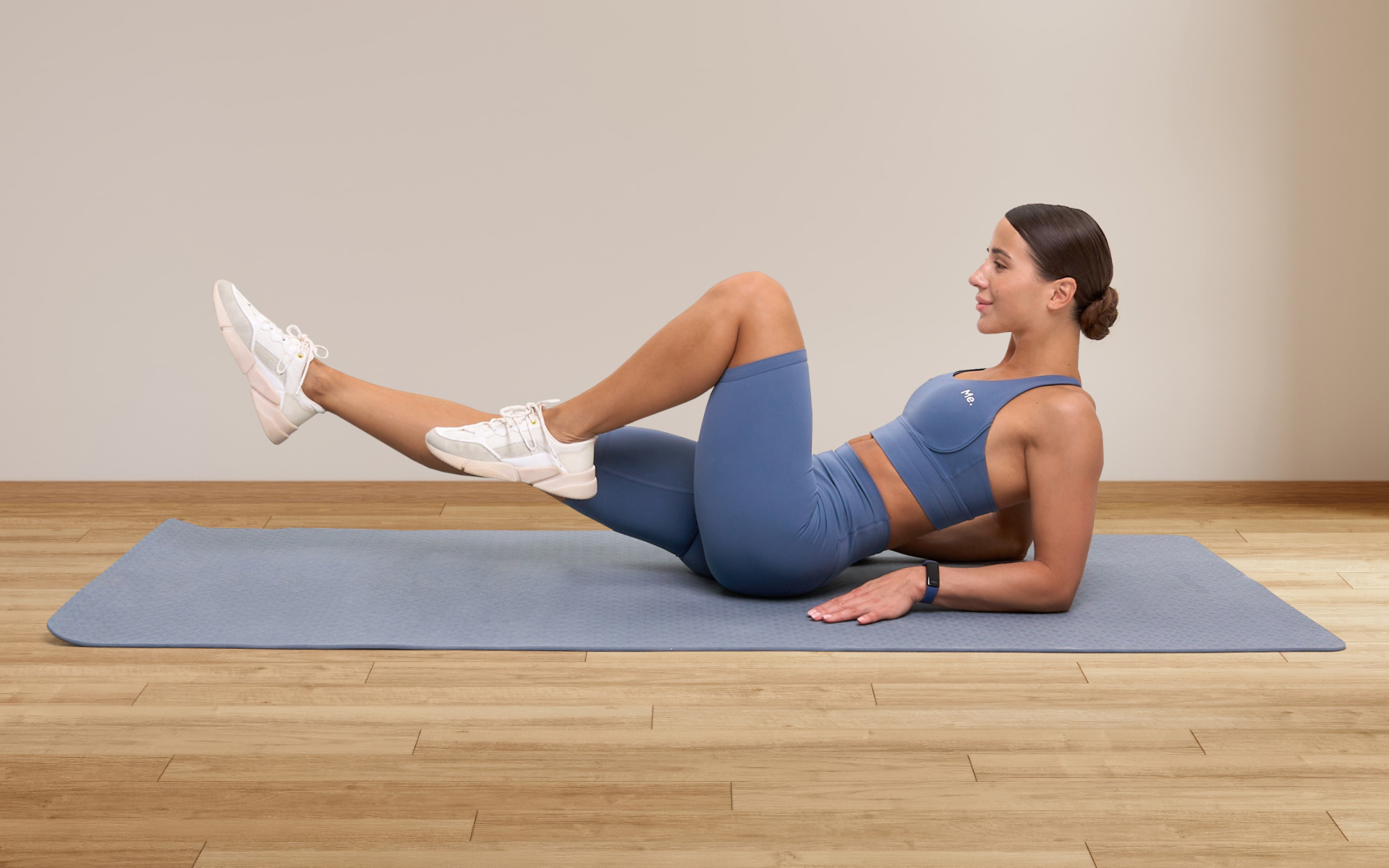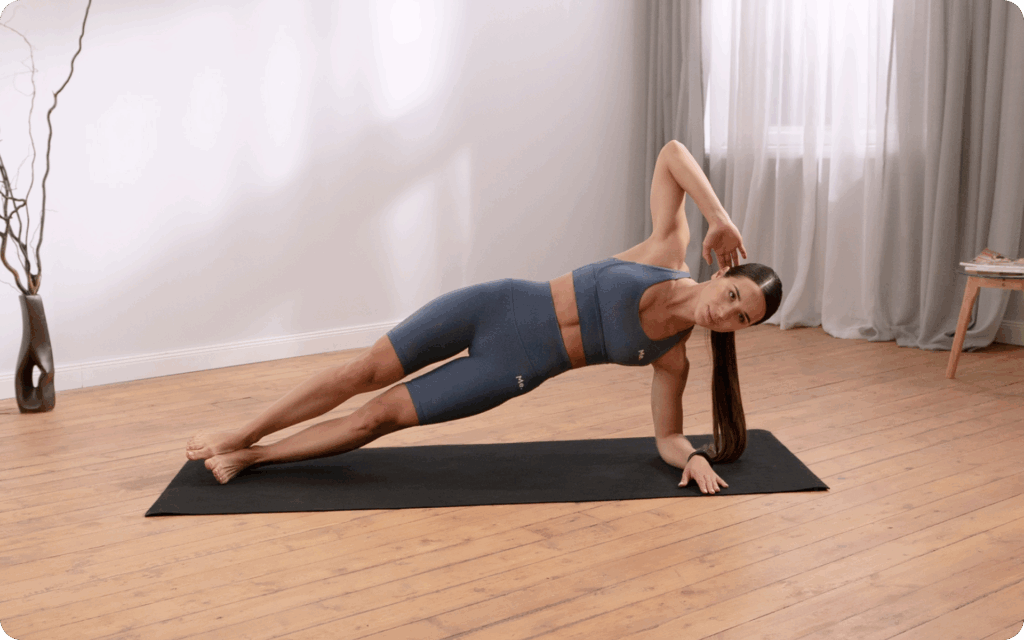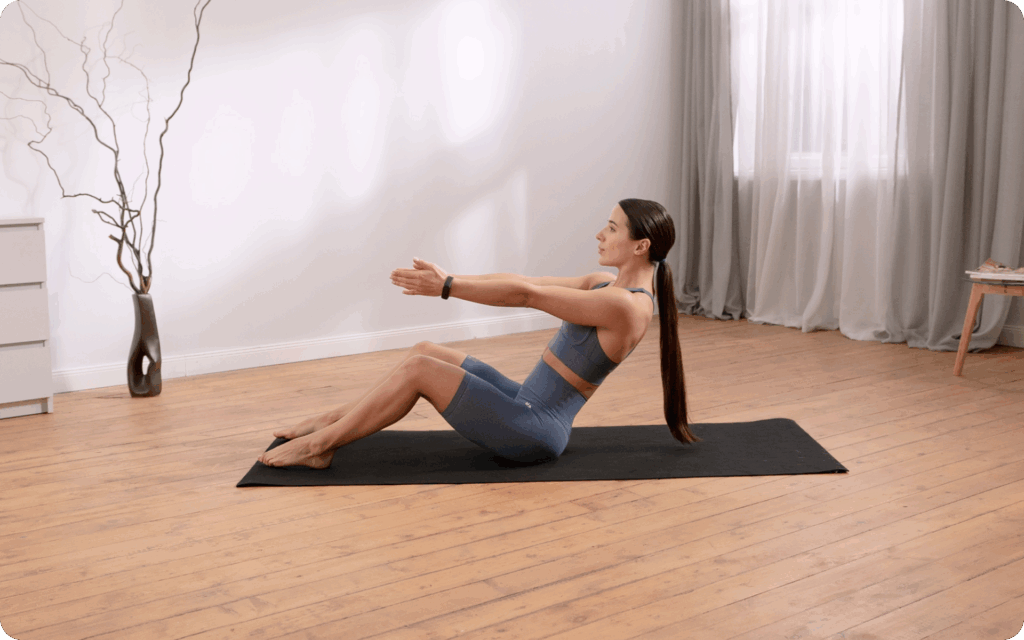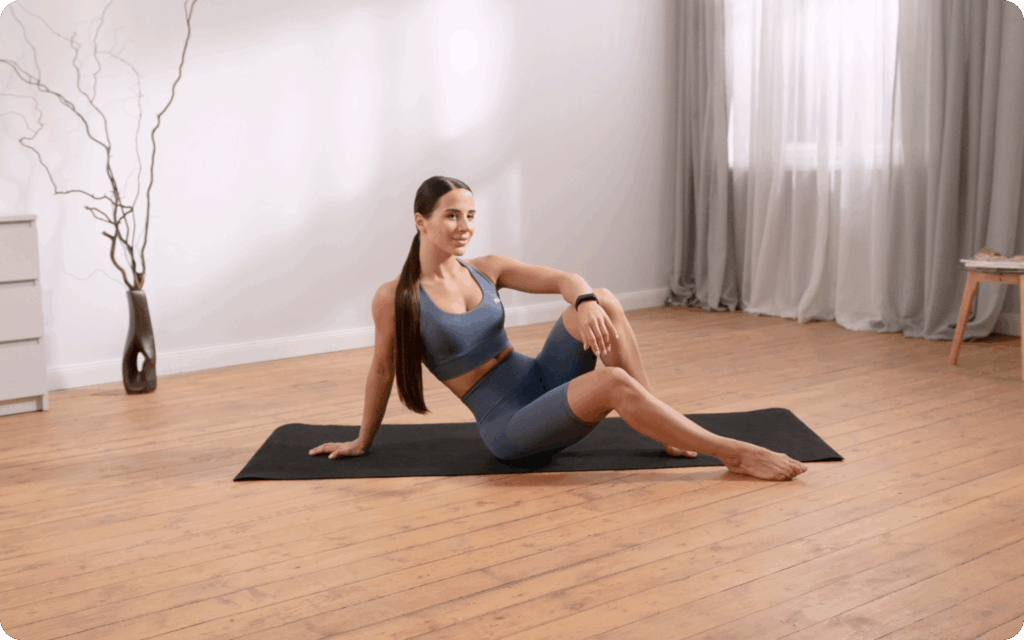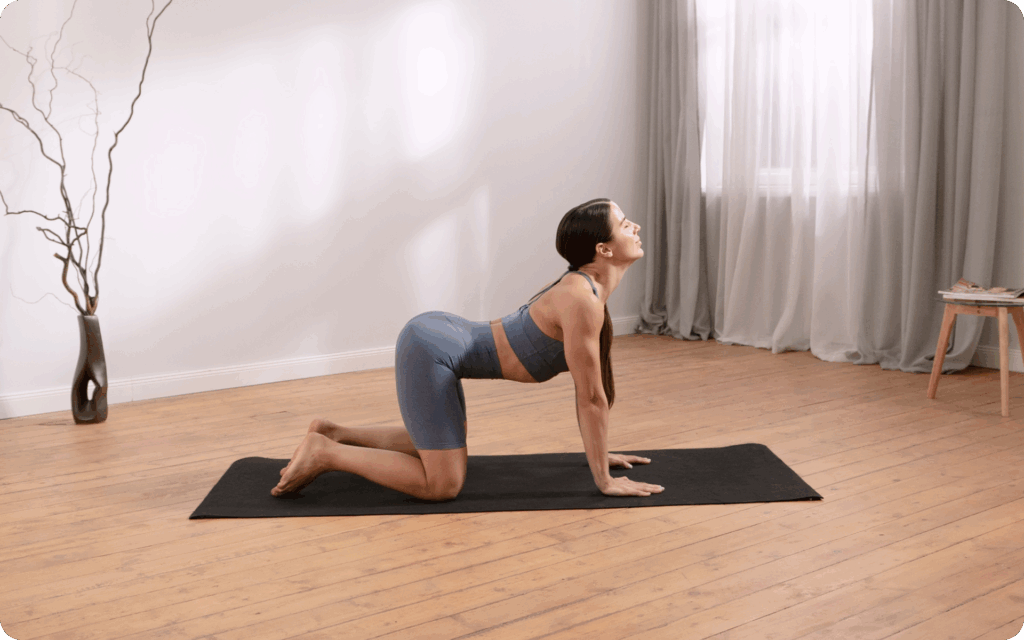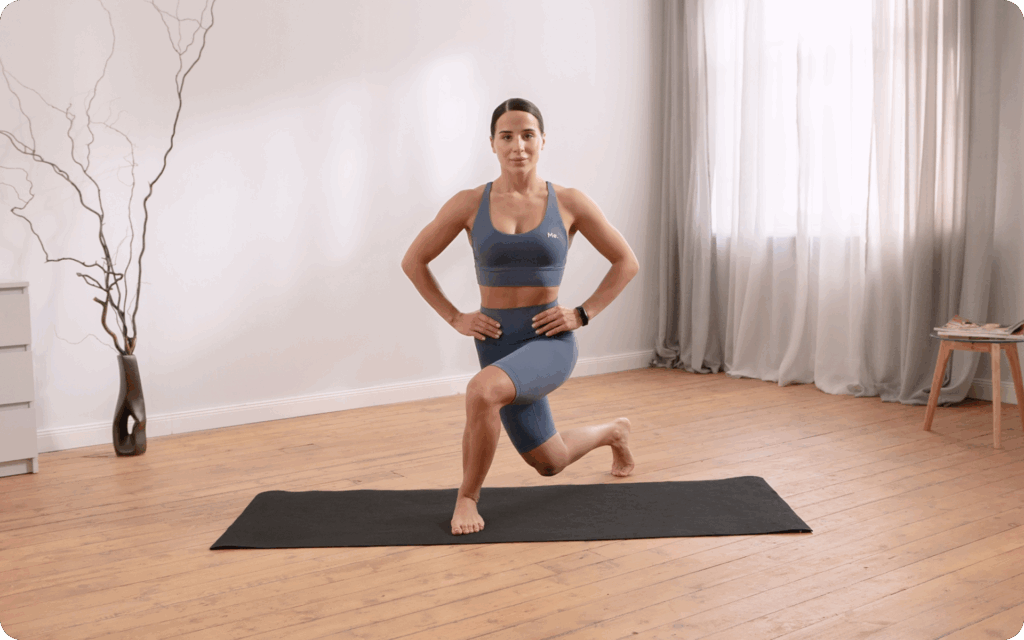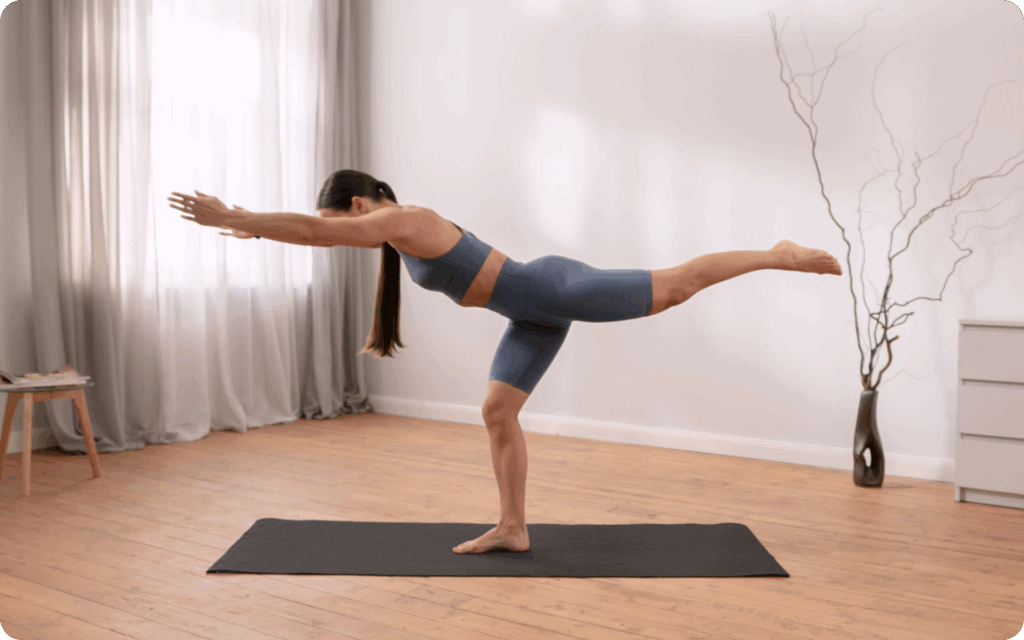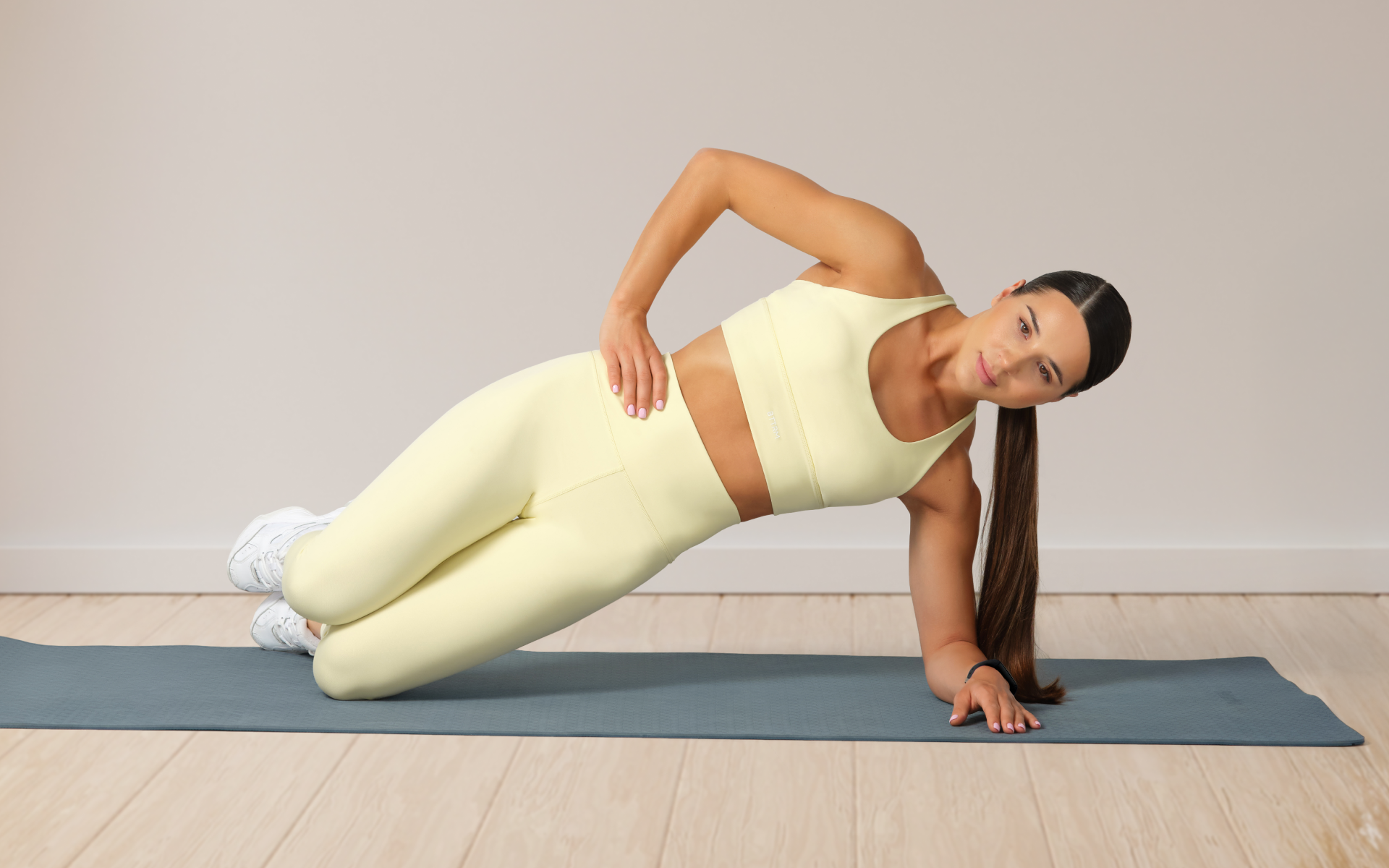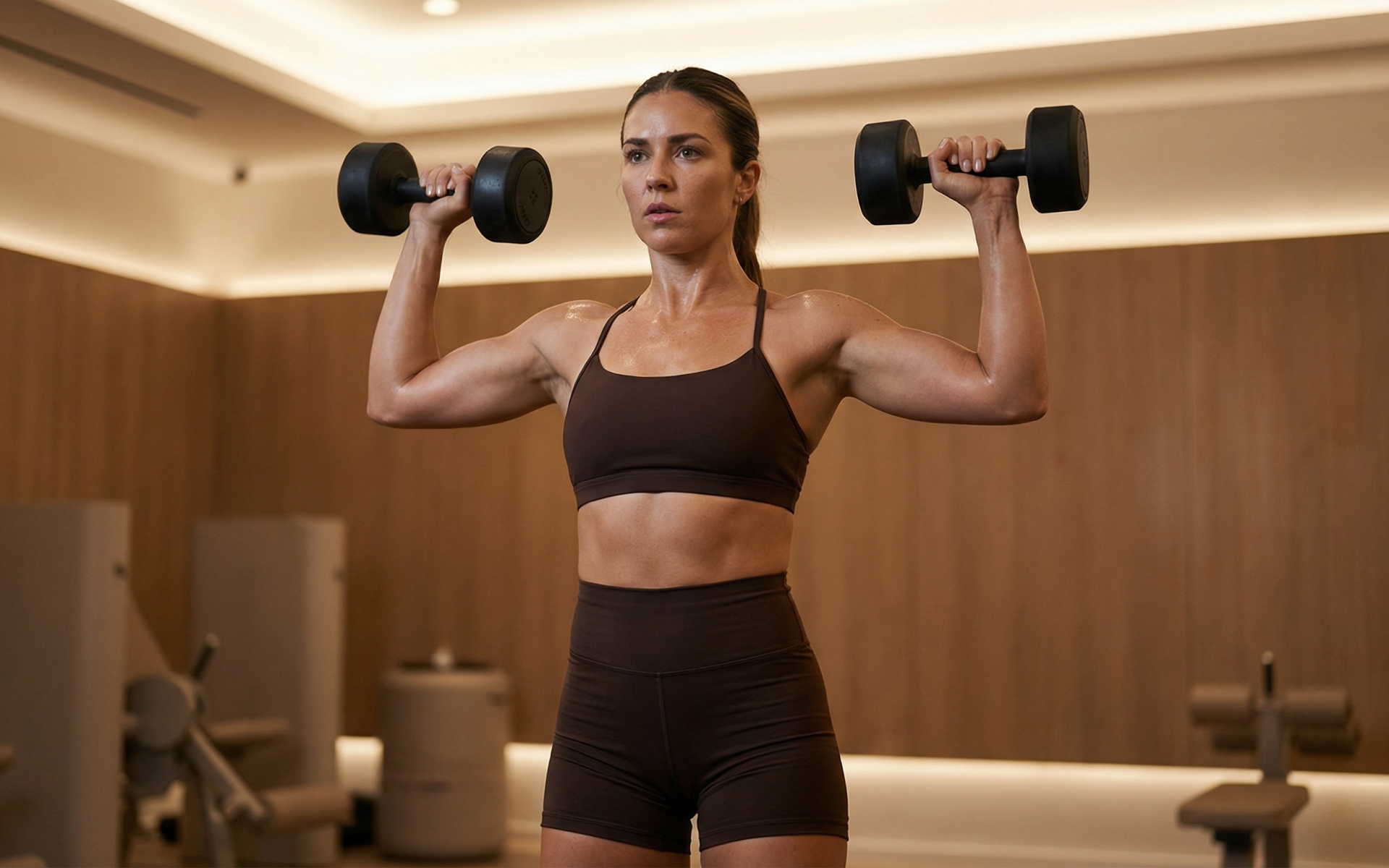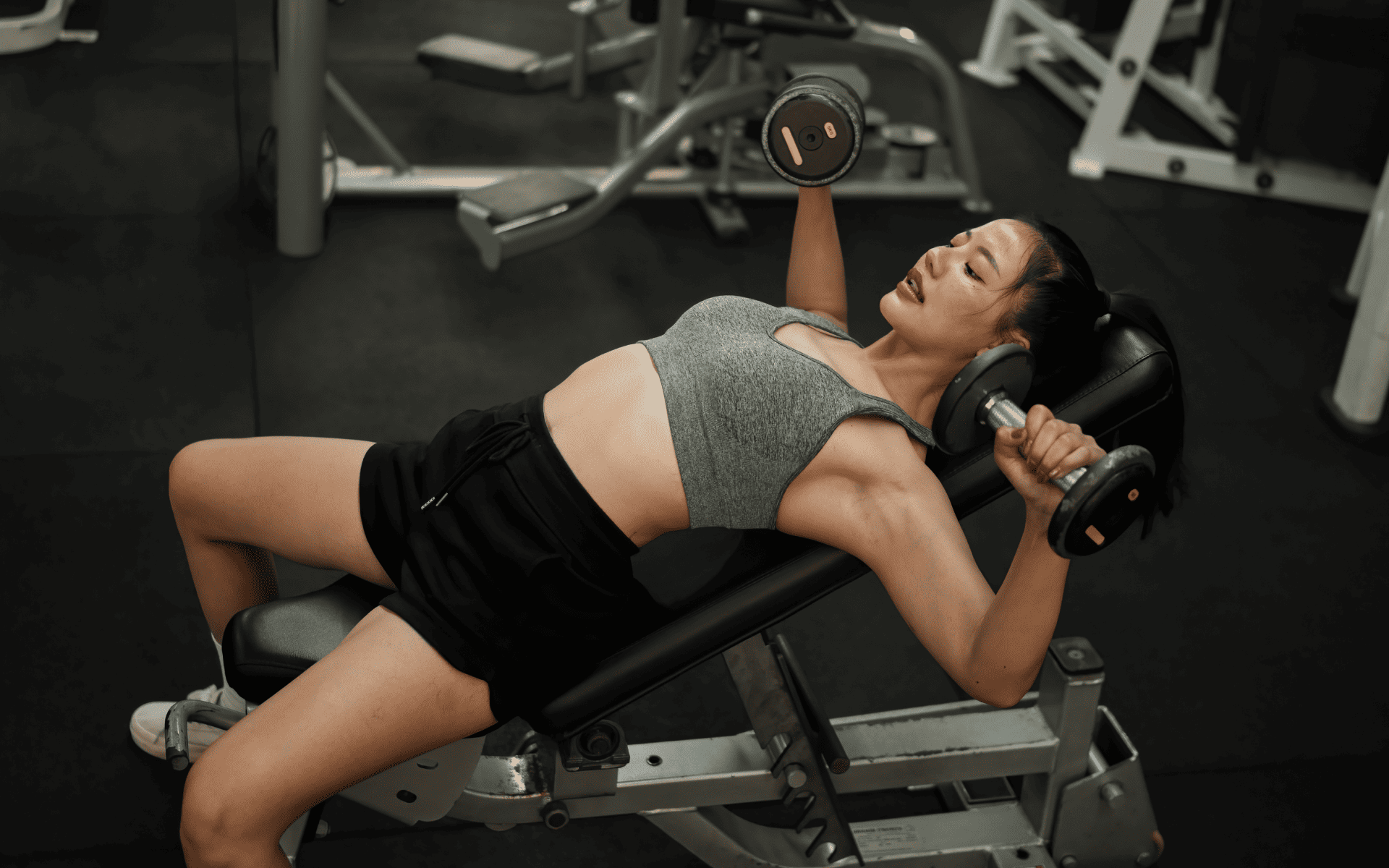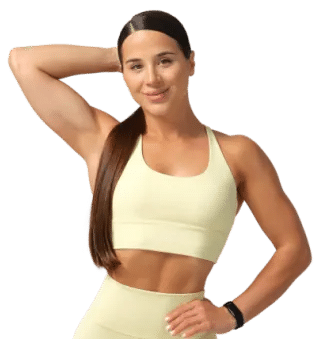Starting a workout routine at home can feel both exciting and intimidating, particularly in the beginning. With so much fitness advice available, it’s easy to become overwhelmed by where to start and figuring out what works.
However, the good news is that with the right information and a well-structured no-equipment beginner home workout plan routine, you can improve your fitness without fancy equipment or the gym.
But how do you come up with a good beginner home workout plan and stick to it long enough to see success? Here are some tips!
What Is a Beginner Home Workout Plan?
A beginner home workout plan is a simple routine that is designed to help those who are new to fitness start exercising at home. Such a routine requires no equipment, limited space, and focuses on easy-to-follow movements that allow you to steadily build strength, flexibility, and endurance.
Why Do I Struggle to Start Working Out?
Most people often find it difficult to start or stick to an exercise routine for the following reasons:
- Fear of judgement – Where you are afraid of other people seeing you trying because, as a beginner, you may not know or understand how to move your body or do the exercises correctly.
- Feeling overwhelmed – This largely comes from not knowing where or how to start. Due to the vast amount of information out there, it can be overwhelming trying to figure out or filter what is true and what will work best for you.
- Lack of motivation – It takes time (and a lot of effort) to see the desired results from exercise. The lack of quick results can demotivate some from starting or even continuing with an exercise routine.
- Time constraints – Busy lives and schedules can make it hard or sometimes impossible to find spare time to exercise, which pushes working out to the bottom of the list of priorities.
- Boredom – You need to enjoy something to stick with it. This goes for something as simple as reading a book or following up with a TV series. If your routine of choice is uninteresting to you, then you’ll struggle to start or keep up with it.
- Fear of pain – Working out is tiring and can hurt. This is the unfortunate reality. Some people who have exercised before and perhaps experienced the pain of sore muscles may be unwilling to try/start again as they don’t want to experience said pain again.
BetterMe: Health Coaching app helps you achieve your body goals with ease and efficiency by helping to choose proper meal plans and effective workouts. Start using our app and you will see good results in a short time.
Where to Start If You’ve Never Worked Out
Here are some tips you can use to start your beginner home workout plan for weight loss:
- Start Slow
Whenever you decide to start a new workout plan, it’s likely because you’re incredibly motivated to do so. Perhaps you saw someone’s before-and-after pictures, or maybe you have an event coming up that you want to look good for.
While it’s good to have a goal to look forward to, the desire to reach that goal can sometimes make you push yourself too fast and too quickly. This can lead to burnout and can also increase your risk of injury.
To prevent this, remember to pace yourself. Start with easy-to-do exercises and shorter workout sessions, and over the next months, gradually increase the intensity and duration of your exercises.
This allows your body to build endurance and gives you time to learn proper workout form, both of which are factors that can help prevent injury and may lead to better results down the line.
- Start with What You’re Most Comfortable with
Due to social media, trends have become the norm, even in the fitness world. While they aren’t necessarily bad, not every trend will work for you. Just because everyone is running doesn’t mean that you have to run too if you don’t like it.
Always listen to yourself and do the exercises that feel best for you. When you do what you love, you’re more likely to stay consistent with it. So, find some simple exercises you enjoy and add those to your home workout plan without equipment.
Once you’ve gotten into the habit of regular exercise, you can try new exercises and challenges. This helps push you out of your comfort zone and challenge your body and muscles differently.
- Focus on the Basics
The fitness world is oversaturated with complicated exercises. Don’t let this deter you. As a beginner, it’s best to start with the basics first, i.e. functional movement exercises. These are workouts that mimic real-life activities such as squatting, bending, pushing, and pulling and they can help you lay a strong foundation.
Studies done on the effect of functional training show that these exercises can (1, 2, 3, 4):
- Improve functional movement capability in untrained persons, i.e. can enhance your ability to perform everyday tasks efficiently and safely.
- Improve muscular strength and movement quality, while reducing injury risk.
- Improve athletic performance, e.g. it can help you jump and sprint better.
Check out this article to learn more ways to exercise at home.
- Check Your Nutrition
Fitness works hand-in-hand with proper nutrition. When you don’t eat properly, chances are you’ll delay or not see results from your workout routine, which may make you quit.
While you don’t need to follow a strict diet, making some simple and healthy changes can lead to incredible results. Foods you should consume when exercising include:
1. Lean animal and plant protein
Such as chicken and other poultry, lean beef, legumes and lentils, and tofu. Studies on the intake of protein have shown that it helps with improved athletic performance, aerobic capacity, endurance, muscle mass, and strength, particularly when combined with resistance training exercises (5, 6).
2. Fruits and vegetables
They’re great for your overall health as they’re rich in antioxidants. Some research has also shown that their consumption may help enhance exercise performance and may enhance some exercise health benefits through the modulation of excessive oxidative stress and inflammation (7, 8).
3. Whole grains
Examples include brown rice, oats, and quinoa. Studies on the intake of whole grains and weight loss have shown that it can help you lose weight, reduce body weight percentage, and reduce the risk of obesity (9, 10). This is largely due to the amount of fiber that is found in these types of food.
4. Healthy fats
These include fatty fish, e.g. salmon, mackerel, trout, tuna, nuts and seeds, avocados, and olive oil.
- Seek Guidance
If you still feel like you can’t do this on your own, don’t hesitate to seek help. You can:
- Ask a friend or family member who has been exercising for a while
- Look up beginner-friendly videos online
- Find tips and routines from a reputable fitness app such as BetterMe
- Engage with a fitness trainer who can guide you on what to do for the best results
Read more: Weighted Pilates Workout: The Perfect Balance Of Strength And Flow
How Long Should a Home Workout Be for Beginners?
According to the World Health Organisation and the Centers for Disease Control and Prevention, adults should exercise for at least 150 minutes a week (11, 12). This equates to 30 minutes of exercise per day, 5 days a week, and is the basic minimum.
As a beginner, you can follow this recommendation and set aside 30 minutes for your beginner home workout plan, female or male routine. If you can’t find 30 minutes to spare, try a 20-minute workout session, but aim to increase this duration to 30 minutes.
You can also go the extra mile and do a 45-minute workout session, but remember to always listen to your body and pace yourself.
How Often Should a Beginner Work Out at Home?
As mentioned above, it’s recommended to exercise 5 days a week, leaving 2 days for recovery. However, some beginners may find it hard to exercise 5 times a week. They can instead start small with 2 or 3 workout sessions a week, and over time, increase this number to 4 or 5.
Reasons why BetterMe is a safe bet: a wide range of calorie-blasting workouts, finger-licking recipes, 24/7 support, challenges that’ll keep you on your best game, and that just scratches the surface! Start using our app and watch the magic happen.
What Is a Good Beginner Workout Plan at Home?
A good at-home workout plan for beginner female or male participants is one that’s:
- Easy to follow
- Flexible, i.e. it allows for modifications to suit the individual’s physical limitations or fitness prowess
- Focuses on basic functional movements – this helps build a strong foundation for future intermediate or even advanced exercises
Exercises that should be in such a routine include:
- Cardio exercises – These include options such as walking, jumping rope, dancing, jogging, and jumping jacks. These can be done as part of a warm-up routine or done extensively as a cardio workout.
- Strength/Resistance training exercises – Basic foundational strength training exercises include beginner variations of squats, lunges, push-ups, planks, and pull-ups
A routine that incorporates the above-mentioned exercises helps train your full body, i.e. the lower body, upper body, and core. It should be noted that strength training workouts can be done with just your body weight, with resistance bands, or with the use of free weights.
- Stretching exercises – Stretching is an important part of any workout routine as it helps warm up and cool down your muscles before and after an exercise routine. Stretching can also help with your balance, which can improve your day-to-day functions.
Are you struggling with a muffin-top? Learn how to get rid of it in our belly fat workout at home guide.
Should Beginners Focus on Cardio or Strength?
You don’t need to choose, because you can do both. A well-balanced routine should include both cardio and strength training exercises. You may choose to split cardio and strength training to different days, or do a full-body routine that incorporates both cardio and strength training. Either option works – just choose what you feel would work best for you.
Check out this article to learn how best to do the workouts at home for men.
They can, but it’s not a requirement. Protein powder is usually used as a supplement to help increase your protein intake. As a macronutrient, protein helps with muscle growth and repair. Therefore, those who wish to see incredible gains in muscle mass and strength use it. However, if your diet already provides you with enough protein, you don’t need to turn to protein powder as a supplement. If the workout of choice is light- or moderate-intensity, it can be OK to do the routine in a fasted state. However, if you intend to do a high-intensity routine, it’s advisable to eat something at least 30 minutes before you work out. On your first day of exercising, you should: It depends on your goal for the day. If the workout session for the day is dedicated to strength training, you should start with weight lifting. Starting with cardio may tire you out too soon, which could negatively affect how much effort you give to weightlifting. If your intention for the day is to do a good cardio workout, start with the treadmill, then move on to strength training. Note: Some people use the treadmill as a warm-up. If this is you, then start with the treadmill before you move on to weights.Frequently Asked Questions
Should beginners use protein powder?
Is it OK to work out on an empty stomach?
What should a beginner do on day one?
Should you lift weights or go on the treadmill first?
The Bottom Line
A beginner home workout plan is a great way to get into fitness without spending money at a gym. However, this doesn’t mean that such a plan should be taken lightly. Ensure that you remain consistent with your workouts, rest enough after exercising, and eat well so you can achieve the desired results.
DISCLAIMER:
This article is intended for general informational purposes only and does not serve to address individual circumstances. It is not a substitute for professional advice or help and should not be relied on for making any kind of decision-making. Any action taken as a direct or indirect result of the information in this article is entirely at your own risk and is your sole responsibility.
BetterMe, its content staff, and its medical advisors accept no responsibility for inaccuracies, errors, misstatements, inconsistencies, or omissions and specifically disclaim any liability, loss or risk, personal, professional or otherwise, which may be incurred as a consequence, directly or indirectly, of the use and/or application of any content.
You should always seek the advice of your physician or other qualified health provider with any questions you may have regarding a medical condition or your specific situation. Never disregard professional medical advice or delay seeking it because of BetterMe content. If you suspect or think you may have a medical emergency, call your doctor.
SOURCES:
- Effects of Exercise-Based Interventions on Functional Movement Capability in Untrained Populations: A Systematic Review and Meta-Analysis (2022, pmc.ncbi.nlm.nih.gov)
- Effects of functional training on muscle strength, jumping, and functional movement screen in wushu athletes: A systematic review (2024, sciencedirect.com)
- Influence of exercise interventions on functional movement screen scores in athletes: a systematic review and meta-analysis (2025, nature.com)
- Effects of functional training on sprinting, jumping, and functional movement in athletes: A systematic review (2022, frontiersin.org)
- The effect of protein intake on athletic performance: a systematic review and meta-analysis (2024, frontiersin.org)
- Protein supplementation increases adaptations to endurance training: A systematic review and meta-analysis (2021, sciencedirect.com)
- Evaluating the health benefits of fruits for physical fitness: A research platform (2010, researchgate.net)
- Fruit-Derived Polyphenol Supplementation for Athlete Recovery and Performance (2019, pmc.ncbi.nlm.nih.gov)
- Weight loss induced by whole grain-rich diet is through a gut microbiota-independent mechanism (2020, pmc.ncbi.nlm.nih.gov)
- Association between Whole-Grain Intake and Obesity Defined by Different Anthropometric Indicators and Dose–Response Relationship Analysis among U.S. Adults: A Population-Based Study (2024, mdpi.com)
- Adult Activity: An Overview (2023, cdc.gov)
- WHO GUIDELINES ON PHYSICAL ACTIVITY AND SEDENTARY BEHAVIOUR (2020, iris.who.int)
